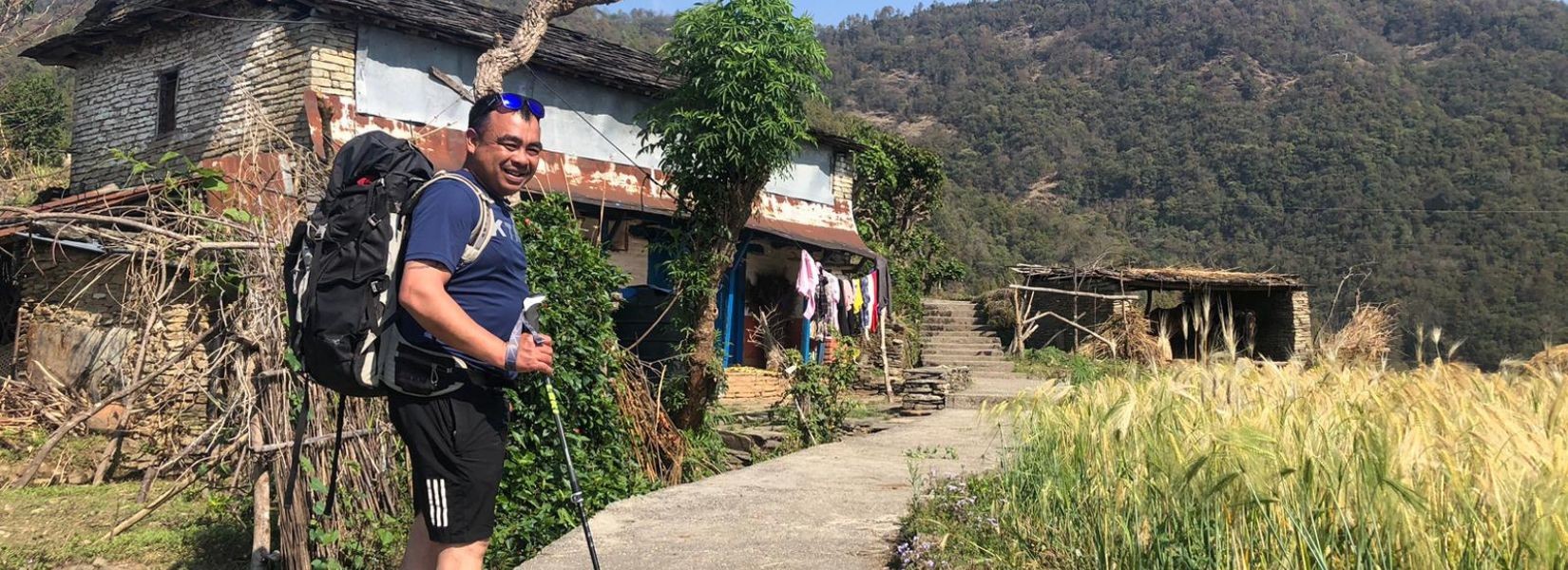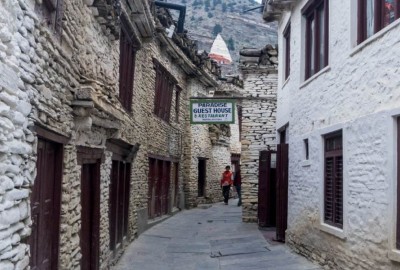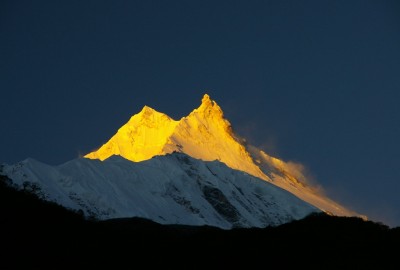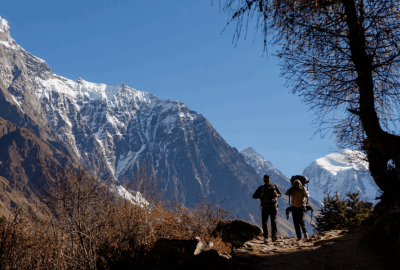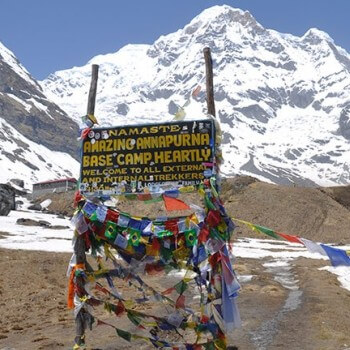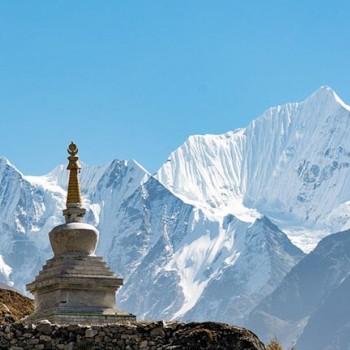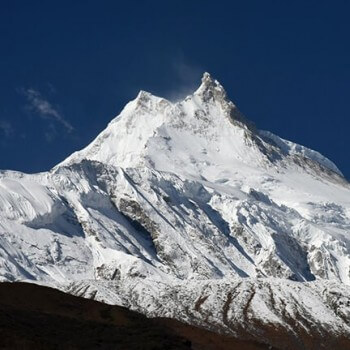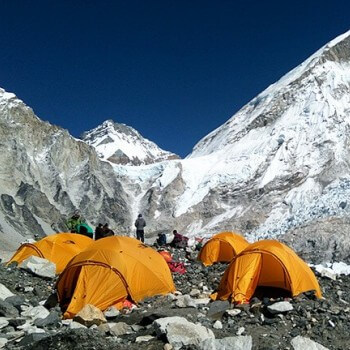Nepal, a country where the sky-touching Himalayas reside, offers some of the world's most breathtaking trekking adventures. From the legendary Annapurna Circuit to the base camp of Mount Everest, trekking in Nepal is not just a journey through nature but a deep dive into a rich cultural ethos and stunning landscapes. However, the rugged terrain and remote trails also pose challenges, making the hiring of a trekking guide not just a convenience but a necessity for many.
Table of Contents
Plan your trip to Nepal
Customize your trip with help from a local travel specialist.
Before embarking on the journey of hiring a trekking guide in Nepal, it's essential to understand the different types of guides you may encounter and what each can offer. This knowledge will help you make the best choice for your trekking needs and ensure a rewarding experience.
Types of Trekking Guide in Nepal
Licensed Professional Guides
The most reliable choice for trekkers, licensed professional guides, have undergone rigorous training and certification processes regulated by the Nepal Government, specifically the Nepal Academy of Tourism and Hotel Management (NATHM) and the Trekking Agencies' Association of Nepal (TAAN). These guides are well-versed in various aspects of trekking, including safety procedures, first aid, environmental knowledge, and cultural insights. They possess a comprehensive understanding of the trails, weather conditions, and local customs, making them invaluable companions on your trek.
Assistant Guides or Porters
For those on a tighter budget or requiring less extensive guidance, assistant guides or porters are a viable option. While they may not hold official guiding licenses, many have significant experience on the trails and can offer basic guidance and support. Porters primarily assist with carrying luggage but often have enough knowledge to act as assistant guides. Hiring a porter-guide can be a cost-effective way to ensure safety and receive guidance, especially on well-traveled routes.
Freelance vs. Agency Guides
Trekking guides can also be categorized based on their employment status: freelance guides or those affiliated with agencies. Freelance guides offer their services independently and can be a good option if you're looking for a personalized experience. However, verifying their credentials and negotiating terms can require more effort on your part.
Agency guides, on the other hand, are employed by trekking agencies that manage the administrative and logistical aspects of your trek. While this option might be more expensive, it provides the security of dealing with an established business, including clearer terms of service, support in case of emergencies, and often more comprehensive packages that include permits, guide insurance, transportation, and accommodations.
It's important to choose a guide in Nepal who is knowledgeable about the local customs and culture in addition to the trails and landscape. Here are some pointers for choosing a guide and how to hire them:
Where to Look for a Trekking Guide?
Employing a guide via a travel company
The first step is to choose the appropriate travel agency, as there are a lot of them in Kathmandu. Inquire about their background, and approximate duration of service in the travel sector, and, above all, confirm if they are approved and have a guide certified by the Trekking Agency Association of Nepal (TAAN). It's a convenient way to go about it, as trekking packages offered by organisations include guides. Even if you decide against purchasing a package, agencies can assist you in locating the right manual. Sending them an email or corresponding electronically with a number of agencies might be wise. Discuss your excursion with them, work out a price, and inform them about your voyage.
Finding a Guide Online
Nothing is impossible to obtain if you search the internet thoroughly and choose a reliable resource. Online profiles are available for many guides. Examine them, their background, their experience, and—above all—read their reviews.
It is advisable to hire someone else if they have negative feedback. Make sure they've received adequate instruction in first aid procedures. A photo of their credentials and paperwork needs to be included in their profile. Engage in as much communication as you can with your guides regarding the location of your trek to gauge their level of expertise.
Certified Professional Guide
A number of guide training centers are located in Nepal, where prospective guides can receive certification and instruction. Frequently, these facilities have a list of authorized tour guides on file that you may get in touch with directly to employ. The Nepal Mountaineering Association (NMA) and the Nepal Academy of Tourism and Hotel Management (NATHM) are two prominent guide training organizations in Nepal.
Recommendations from Past Trekkers
Word-of-mouth recommendations are often the most reliable. If you know someone who has trekked in Nepal, asking for their guide's contact information can lead you to a trusted professional. Personal recommendations can also give you insight into the guide's personality and style, ensuring a good match for your trek.
For a safe and enjoyable trekking journey in Nepal, choosing the appropriate trekking guide is essential. To find the ideal guide for your expedition, consider the following advice:
To begin, look for trustworthy Nepali trekking companies. Search for companies that have a good reputation, are certified, and belong to reputable organizations such as the Nepal Mountaineering Association (NMA) or the Trekking Agencies Association of Nepal (TAAN).
- Make sure the guides the organization offers have licenses and certifications from the relevant Nepalese authorities. Proper first aid, wilderness rescue, and hiking instruction should have been provided to qualified guides.
- In the area you intend to visit, look for guides that have guided numerous treks. Trekking is made more enjoyable by knowledgeable guides who are acquainted with the area, the weather, and subtle cultural differences.
- Assess the caliber of service given by the company and its guides by reading through evaluations and testimonies from prior hikers. Review comments about the professionalism, skill, and satisfaction of the guides.
- Consult with friends, relatives, or other hikers who have done treks in Nepal before for recommendations. You can obtain reliable guides and gain insightful information from personal suggestions.
- Give the trekking agency clear instructions about your preferences, aims for the trek, and any unique needs. They can use this information to match you with a guide who best suits your needs.
- Find out what services, such as permits, lodging, food, and porter assistance, are included in the package offered by the trekking firm. Make it clear whether these are extra costs or covered by the guide's rates.
- Prior to the trek, if at all possible, schedule a face-to-face meeting or video conference with your guide. You may evaluate their professionalism, communication abilities, and fit with your organization by doing this.
- When choosing a guide, follow your intuition. Select a person who helps you feel at ease, assured, and confident about the next trekking adventure.
- Find out how the guide handles safety and getting ready for emergencies. Ascertain that they possess the necessary safety equipment and first aid supplies, as well as a well-defined plan for handling any hazards.
Trekking Guide Cost in Nepal
The price of hiring a guide for your trekking trip in Nepal will depend on a number of things, such as the length of your walk, the destination you have selected, and the guide's level of experience. A trustworthy guide will usually cost a little bit more, but it's usually worth it to pay a more for someone with their level of knowledge and reputation.
Why? Guides are essential for securing trekking permits and negotiating difficult terrain, which guarantees your enjoyment and safety on the trip. In addition, experienced guides frequently have solid ties to the communities that surround the routes, which promotes friendlier greetings and enhances trekkers' cross-cultural encounters.
The cost of your guide's services should run you, on average, between $25 and $30 per day. Tipping customs differ, though. Although not required, tipping is a common way to show appreciation for excellent service; the normal amount is approximately 10% of the overall journey cost.
Remember that other expenses like lodging and food could have an impact on the total cost. While several trekking organizations pay these guides' fees, others do not. To avoid any surprises, it's advisable to make this clear in advance if you decide to hire a guide on your own. You may also be responsible for paying for their lodging.
A summary of typical guide fees in major trekking areas is provided below:
Everest Region: $30 per day
Annapurna Region: $30 per day
Langtang Region: $25 per day
Remote or less-traveled destinations: $35 per day
Trekking guides typically charge a daily rate, which can range from USD 25 to USD 35 or more for highly experienced guides. This rate usually includes the guide's service only, with additional costs for accommodation, meals, and transportation during the trek. Clarify what's included in your guide's rate to avoid any surprises.
Keep in mind that pricing can change depending on specific situations and agreements, even though these values provide a broad sense. For a hassle-free and delightful trekking journey, it's always a good idea to check on current pricing and talk through expectations with your selected guide or agency.
Responsibilities of Trekking Guides
To guarantee the security, happiness, and accomplishment of hikers, trekking guides in Nepal have a lot on their plates. Below is an outline of their main responsibilities:
- Trail navigation: In particular, in isolated or difficult terrain, guides lead hikers along specified paths to ensure they stay on the right trail and prevent getting lost.
- Ensuring Safety: Guides evaluate and reduce hazards while providing advice on appropriate hiking techniques, the weather, how to avoid altitude sickness, and emergency protocols. They have received training in identifying symptoms of altitude sickness and other medical conditions, and they can help by setting up an evacuation if necessary.
- Arranging Permits: In order to ensure that local laws are followed, guides take care of the paperwork and administrative details associated with acquiring the appropriate permissions for hiking in national parks, conservation areas, and restricted areas.
- Cultural interpretation: By sharing tales and insider information about the communities they come across along the trail, guides enhance the hiking experience by providing insights into the customs, traditions, and culture of the area.
- Logistical Support: They plan for lodging, food, and transportation, ensuring that hikers have access to essentials for the duration of the expedition.
- Porter Management: Guides can work in tandem with porters to make sure they are appropriately compensated, outfitted, and handled when carrying supplies and equipment for hiking.
- First Aid and Emergency Response: Trained in both wilderness medicine and basic first aid, guides may provide medical help when necessary and organize emergency evacuations in the event of accidents or medical emergencies.
- Communication: By acting as a point of contact for hikers, nearby villages, and trekking organizations, they facilitate communication and address any problems or worries that might come up while on the trail.
- Environmental Stewardship: Trekkers are encouraged to limit their environmental impact by adopting eco-friendly activities, and guides advocate for ethical trekking methods by supporting the Leave No Trace philosophy.
In general, trekking guides are essential to making sure hikers enjoy a safe, pleasurable, and culturally enlightening experience while taking in Nepal's breathtaking scenery.
Considerations for Solo Female Hikers Choosing a Guide
It is quite significant to be a woman who wants to trek alone. By itself, there is a great deal of risk. Reports of female trekkers being harassed by their guides have surfaced quite a bit. Hiring a female guide is the safest way to prevent catastrophes of this kind. There's a risk of getting robbed when you see a solo female. Consequently, having a guide who can shield you from these situations is imperative.
There are a lot of travel companies that solely provide female guides; look for them and follow their recommendations. Take pictures of the guide's documentation and forward them to your loved ones so that, in the event of an emergency, the guides can be reported right away to the closest police stations. Make sure you are always reachable by phone or text.
Are Porters and Guides the Same?
No, of course, they aren't. You can navigate and have a safe, uncomplicated walk with the assistance of guides. On the other hand, the porters' job is to transport your bags. Some myths also exist about how guides carry your things. I'm sorry to break your bubble, but they don't. The guides are under no obligation to assist you with carrying weights; it is only the porter's responsibility. It's a good idea to bring only what you need, as this will make packing easier and eliminate the need for a porter. Currently (2023), the average day rate for a porter is between $15 and $30.
Hire a porter-guide, also called a guide cum porter
if hiring a guide and a porter separately seems like too much trouble. People who operate as porters as well as guides are known as porter guides. There is a maximum weight limit of 15 kg for the porter guide. Compared to guides, Porter guides know less about the local history and locations. They do all the work that a guide does for you and are familiar with the trails in the area. Porter guides may be a preferable choice to employing guides and porters independently as porter guides charge less than other guides because they typically possess less experience. It takes less labor because you don't need to locate two distinct persons.
Why Hire a Trekking Guide in Nepal?
The decision to hire a trekking guide in Nepal is multifaceted, with benefits ranging from safety to a deeper cultural understanding. Here's why securing a guide is advisable for most trekkers:
Safety
The primary reason for hiring a guide is safety. Nepal's trekking routes vary in difficulty and remoteness, and challenges such as sudden weather changes, altitude sickness, and navigation issues can arise. A guide is trained to handle these situations, ensuring the well-being of their clients throughout the trek.
Local Knowledge and Language
A guide acts as a bridge between trekkers and the local communities they visit. Their knowledge of the local language and customs can enhance the trekking experience, allowing for meaningful interactions with local people and insights into Nepal's rich cultural heritage.
Navigation and Logistics
Nepal's trekking trails can be complex and difficult to navigate, especially in less-traveled areas. A guide ensures that you stay on the right path and helps manage the logistics of daily trekking, including finding accommodations and meals, which can be invaluable in remote regions where resources are sparse.
Trekking Guide Qualifications and Certifications
When hiring a trekking guide in Nepal, scrutinizing their qualifications and certifications is crucial. These credentials not only ensure the guide's competence and reliability but also contribute to your safety and the overall trekking experience. Here's what to consider:
Government-issued Licenses
The most fundamental certification to look for is a government-issued license. In Nepal, professional trekking guides must obtain their license from the Ministry of Culture, Tourism and Civil Aviation after completing a series of training programs conducted by institutions like the Nepal Academy of Tourism and Hotel Management (NATHM). These licenses are a testament to the guide's knowledge of trekking routes, safety protocols, first aid, and environmental conservation practices.
First Aid and Rescue Training
The unpredictable nature of trekking in the Himalayas makes first aid and rescue training indispensable for a trekking guide. Verify that your guide has up-to-date certification in first aid, including altitude sickness management, which is crucial in high-altitude treks. Some guides also undergo advanced courses in mountain rescue operations, adding an extra layer of safety to your trek.
Experience and Language Skills
While certifications are important, a guide's experience can be equally telling. An experienced guide will have in-depth knowledge of the trails, weather patterns, and local communities. They can provide insights into the cultural and historical contexts of the regions you traverse, enriching your trekking experience. Additionally, language skills are vital for effective communication. Most professional guides in Nepal speak English fluently, and some may speak other languages, facilitating a smoother experience for trekkers from various backgrounds.
Preparing for the Trek with Your Guide
Once you've hired a guide, preparing adequately for the trek is the next step. Proper preparation ensures a smooth and enjoyable journey. Here are key aspects to consider:
Pre-trek Meetings and Planning
Meet with your guide before the trek to discuss the itinerary, assess your fitness level, and address any concerns. This meeting is an opportunity to finalize the trek's details, understand the challenges ahead, and ensure you're adequately prepared.
Gear and Supplies
Your guide can offer valuable advice on the necessary gear and supplies based on the trek's specific requirements. Essential items typically include appropriate clothing, footwear, a sleeping bag, a first-aid kit, and personal items. Renting gear is an option in cities like Kathmandu and Pokhara if you prefer not to bring everything from home.
Setting Expectations and Communication
Clear communication with your guide is crucial for a successful trek. Discuss your expectations, pace, and any medical or dietary needs. Establishing a good rapport and clear communication channels with your guide will enhance your trekking experience.
Hire a Guide with Mount Mania
View Mount Mania's array of experienced, trained guides who are adept at making sure you stay safe during your hiking expedition. As you set out on your excursion, you can feel secure knowing that our guides are prepared to address medical situations. In addition, they receive training that promotes sustainable hiking techniques by upholding environmental conservation and respecting local customs. To make the administrative process easier for you, we also assist in obtaining TIMS permits. You can expect an amazing hiking experience in Nepal with Mount Mania. Reach out to us right away, and let our knowledgeable guides show you the wonders of Nepal's landscapes. Don't hesitate any longer.
Conclusion
Hiring a trekking guide in Nepal is a decision that significantly impacts the quality and safety of your trekking experience. From understanding the types of guides available to navigating legal and ethical considerations, this comprehensive guide aims to equip you with the knowledge to make an informed choice. Remember, a good trekking guide is not just a navigator but a companion who enhances your journey through their expertise, insights, and support.
As you embark on this adventure, cherish the landscapes, respect the local cultures, and embrace the challenges and joys that come with trekking in the majestic Himalayas. With the right preparation and a trusted guide by your side, your trekking adventure promises to be an unforgettable experience.
If you need further information regarding hiring a trekking guide, feel free to contact us.

